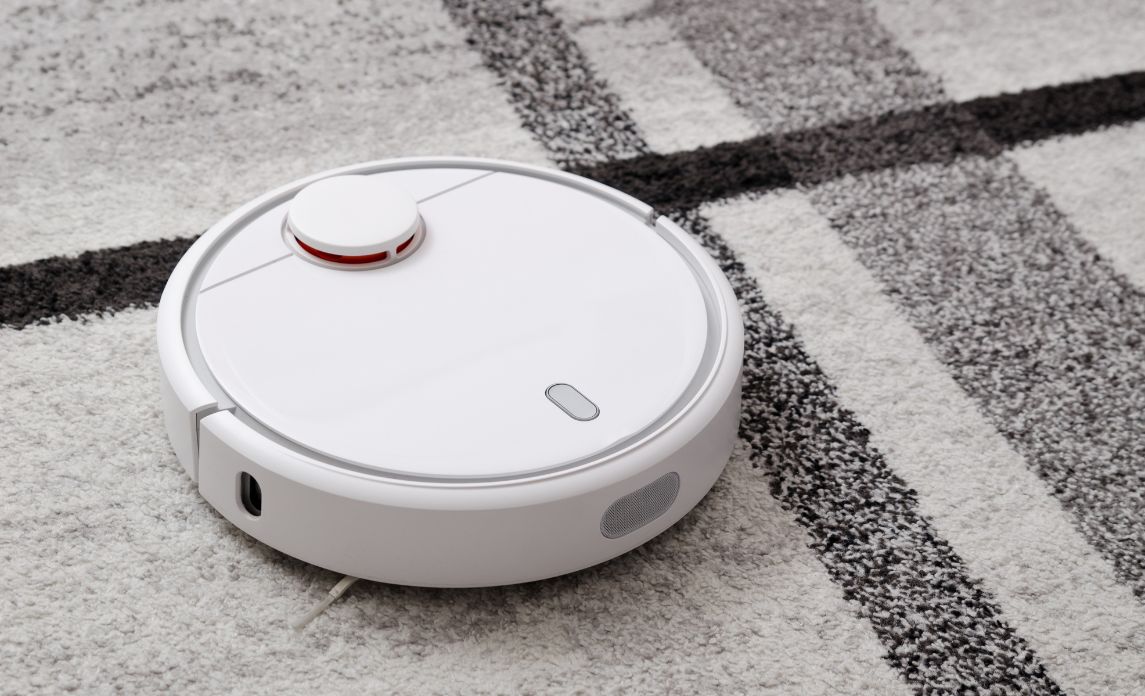One of the most popular robot vacuums, the Roomba, was released in 2002. However, the first “robotic vacuum cleaner” was actually introduced 6 years earlier in the form of Electrolux’s Trilobite (although it did not become commercially available until 2001).
The Trilobite was quite a novelty back then, capable enough to pick up dust and small bits of debris even if it did have certain quirks. Specifically, its sensors often failed to detect sharp corners. It also stopped about an inch from walls and other objects, which left behind stripes of dirty floor.
It’s been more than two decades since then and robotic cleaners have definitely become more effective and more capable. That said, there are still downsides to these technological cleaning tools. Most of the time and especially for major cleaning jobs, professional cleaning services will deliver better results.
Below, we take a quick look at the pros and cons of robotic cleaners and why they can’t replace humans just yet.
Pros of Robot Cleaners
They Save Time and Energy
One of the biggest advantages of robot cleaners is the time and energy savings they provide. While some people may like cleaning and even find it therapeutic, others don’t share the sentiment. With their busy schedules, the chore takes a backseat.
Through the help of robot cleaners, even those with the most jam-packed calendars can keep things neat. Obviously, these smart vacuums can only take care of the floors but even that’s already a big load off your shoulders.
They’re Programmable
If you’re going away for a while, say for a vacation or a business trip, it can be frustrating to come home to a dirty house. Fortunately, this is a problem that’s easily solved by robotic cleaners that come with a schedule or calendar mode. Simply set the date and time when you want it to activate, and you’re all set.
This feature also comes in handy when you want to clean at specific times, such as when your kids are at school or while you’re at work.
They Can Reach Easily Under Furniture
Even with a long-handled broom or mop, it can be challenging to clean under pieces of furniture like a sofa, bed, or chest of drawers. The position you usually adopt during this task—like crouching or getting down on your knees—can result in muscle strains.
Thankfully, most robot vacuum cleaners nowadays have a disc-like shape that’s flat enough to easily get under furniture. This prevents the accumulation of dust and problems associated with it, such as allergic reactions and other health problems.
They Don’t Get Sick
For commercial cleaners, there’s always a risk of getting sick on the job. If you’re attending to an office, for example, one of the employees may have gone to work sick with a cold; once you punch in and start working, you may get exposed to the virus and get sick as well.
This isn’t so much of a problem with robotic cleaners like vacuums and window cleaners. Because they’re machines, they can’t get sick; even if they do get exposed to microbes, you can clean and disinfect them afterwards to prevent contamination. The ultimate result is increased health and safety.
Cons of Robot Cleaners
They Can Get Stuck
While they’re called “smart” devices, robotic cleaners can get stuck because they can’t truly “understand” what’s going on in their surroundings. Their programming can incorrectly estimate a gap between the floor and the bottom side of furniture, for example, and result in the device getting stuck.
A robotic cleaner may also get things stuck in its rollers, which can prevent the machine from moving properly. If this happens while you’re away, you’ll arrive at a dirty house and a fully discharged vacuum.
They Can Run Out of Power Mid-Cleaning
One of the biggest downsides of robot vacuums and other battery-operated cleaners is that they can run out of charge in the middle of a cleaning session. This can be extremely inconvenient, as you have to wait for a while for the battery to charge-up again before you can continue the task.
They’re Small
Most robotic cleaners are smaller in scale than their standard counterparts because a smaller appliance is easier to power with a battery. However, while compactness is great for saving storage space, it’s not that beneficial when it comes to the size of the bin. If you’re cleaning a large space or if there are multiple sources of dirt (e.g., pets, carpet), you’ll find yourself emptying out the bin more frequently.
They Don’t Produce the Same Quality of Cleaning
The biggest difference between robotic cleaners and humans is that the results really can’t be compared. It doesn’t matter if they have all the bells and whistles that technology can provide; ultimately, traditional vacuums and cleaning appliances simply work better.
There’s also the fact that you can’t teach machines nuance. Keep in mind that humans will have stricter standards and requirements when it comes to cleanliness, which robots usually can’t interpret. As long as they’ve performed what they’ve been programmed to do, robotic cleaners will consider it mission accomplished.
Obviously, you’re trading convenience for quality. You can also schedule more frequent cleanings, if you like. That said, if you really want the best results, humans really are superior on all counts.
To Buy or Not to Buy Robotic Cleaners
If all you’re looking for is a convenient way to keep a space acceptably clean, a robotic cleaner is definitely a good investment. This allows you to focus on other tasks or even take a break, while your gizmo is buzzing around and picking up dirt. Do note, however, that even the cheapest units are quite expensive.
However, if you’re concerned about the quality of the output and receiving personalised service, it’s still best to work with professional cleaners. From sparklingly clean floors to a crystal clear swimming pool, you can expect top-notch results with humans handling the job.


